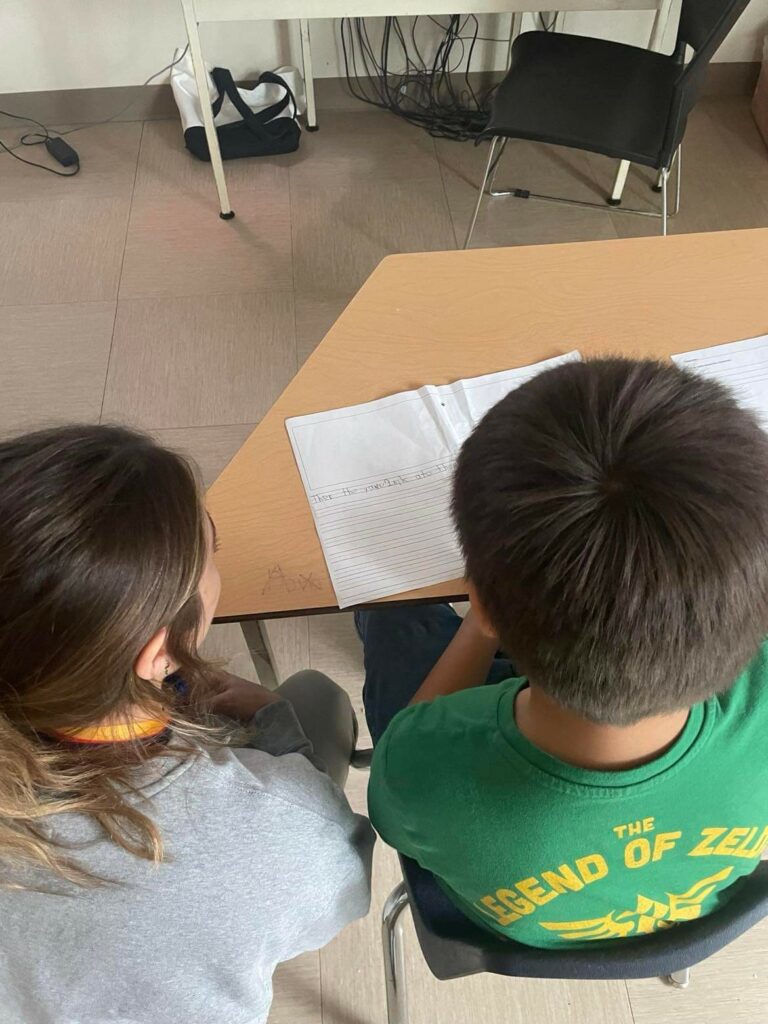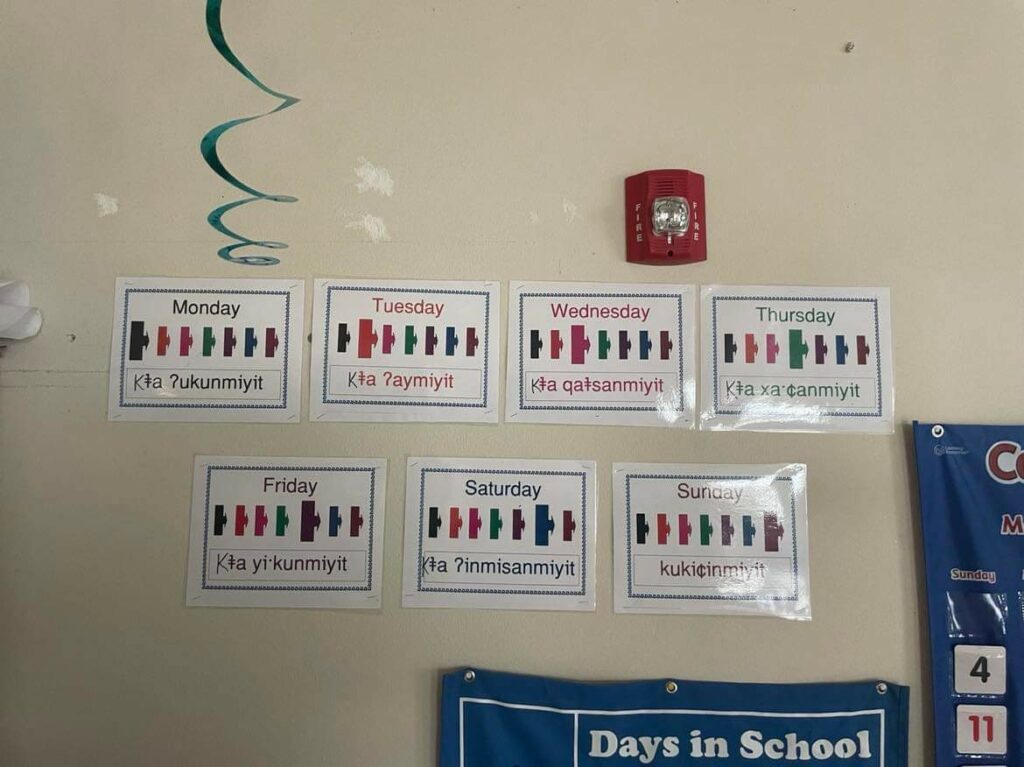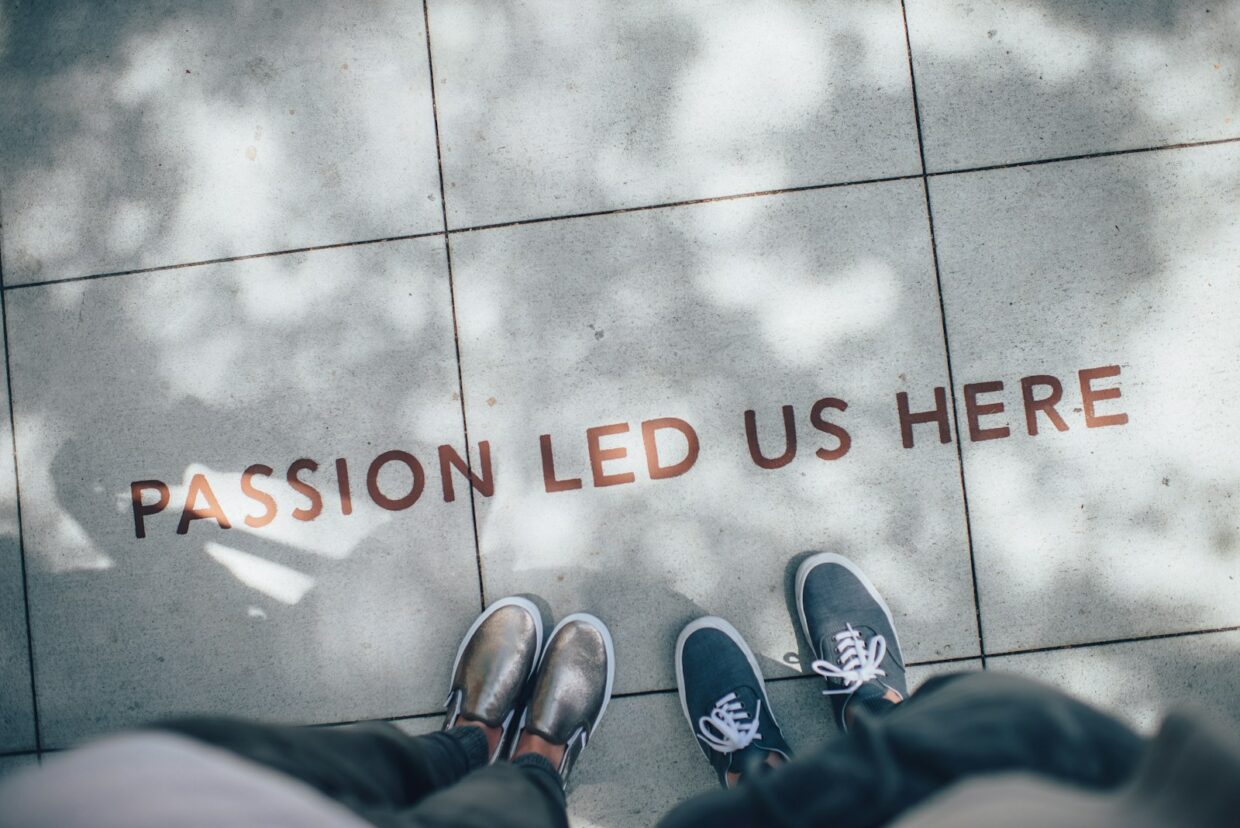One of my most memorable field experiences was our last visit at Aqamnik School, in the winter semester. I am very thankful to have been welcomed into Aqamnik School for three consectutive Monday’s. Below I used the Gibbs Reflective Cycle to reflect on my experience at the school.

- Description- For three consecutive Mondays on January 22nd, 29th, and February 5th, my EDCI 250 class, was welcomed into Aqamnik School. I was lucky to observe and help in Ms. Sebben’s classroom with grades 2/3! Our first two visits were to Aqamnik school in the morning. But on our last visit to Aqamnik School I got to experience the afternoon part of the school day. During this visit, we were part of the P.E. class, learnt about the Ktunaxa creation story, and drumstick making where I got to engage in a traditional Ktunaxa practice with the students. During the lesson half of the grade 2/3 students were asked if they wanted to go upstairs to work on their drumsticks. These drumsticks are going to be used for the drumming ceremony at Aqamnik school. I went upstairs with this group of students to observe and learn about how to make drumsticks. Each grade 2/3 student was paired with an older buddy to review how to create a drumstick. I was with one student who was very excited to show me their previous work. Once this student was refreshed on how to make the drumsticks, they were eager to teach me.
- Feelings and thoughts- My entire time at Aqamnik school I felt included and appreciated. The staff and students were very welcoming, and my heart was filled with joy when the grade 3 student I was sitting beside wanted to teach me how to make a drumstick. It was a beautiful thing to experience seeing the student only need a small amount of guidance from their older buddy, and then take on such confidence and pride in what they were creating. I was just as excited as the student to be learning about how to make drumsticks. I had feelings of importance and gratitude towards the students for sharing their knowledge with me. I think it was important that I let the student teach me in this instance. Overall, I am so grateful to have been part of this half of the day. I felt I learned more about the Ktunaxa culture and how the school infuses it into their daily schedule. I think that this has allowed the school to have such a great sense of community.
- Evaluation- This experience was very positive for myself, and the group of students I was with. It is wonderful how the school incorporates Indigenous learning into the classrooms. This contributed to my own growth as an educator as I got to further my learning about the Ktunaxa culture by collaborating with students while they worked on their drumsticks. The way they split the grade 2/3 class was very effective for this group. Drumstick making was like a break from learning that required the students to have more focused, and narrowed attention on using literacy skills. The drumstick making portion of the afternoon was focused on ways of Indigenous knowing, by building a sense of school community between older, and younger students, doing a learning activity that is hands on that taught Ktunaxa culture. The students were very proud of the beautiful projects they created in this time and got to do this learning in welcoming environment with older students, and Indigenous folks. In this experience I learned from the student about the Ktunaxa culture, which is very important in some cases. It’s truly inspiring to see how schools are integrating Indigenous knowledge and perspectives into their classrooms. I have learnt more about the Ktunaxa culture, which has allowed me to grow my respect for the Ktunaxa way of living (UVIC Teacher Competency 6). The focus on holism, interconnectedness, and balance aligns with Indigenous epistemologies and contributes to a more inclusive and meaningful educational experience for all students.
- Analysis- At Aqamnik Elementary School, the drumstick making portion of the students’ afternoons goes well because of how strong the sense of community and belonging is. The students benefit from morning meetings and proximity to one another, which has created a strong connection between all students and staff. Also, incorporating Ktunaxa language and knowledge is a key component of their learning. It is clear how important Ktunaxa culture and knowledge are to both the students and staff. They seamlessly blend Indigenous ways of knowing into each day of school, allowing students to practice Ktunaxa language and ways of knowing. This is beneficial for all students because it makes them more culturally aware, empathetic, and more open-minded (Suri & Chandra, 2021).
- Conclusions- After this experience at Aqamnik School I learnt how beneficial it is for all students to learn about and participate in different cultural practices, specifically Ktunaxa, in this situation. I also learnt that it is important to implement different cultural practices respectfully. Learning about and integrating knowledge of different cultures is important for student and teacher development. If I could go back to this experience again, I would have asked the teacher if I could start creating my own drumstick after I had learnt from the student how to make one, and more about the importance of drumming in Ktunaxa culture.
- Action Plan- In the future when I have my own class of students, I will integrate multicultural learning activities in a respectful way. To create a respectful learning environment, it is helpful to have individuals present from that cultural background to teach the students. If I were placed in this similar situation again, I would ask more questions! Often, I feel that I won’t phrase a question correctly and it could sound offensive. But this is how you learn! Asking questions is so important, and in this situation, I realized I am not the keeper of this knowledge and got to learn from the students and their peers. I could have asked questions about who attends the drumming ceremony, what was traditionally used to create the drumming sticks, and whatever else came to mind.

Drum Stick Making Tutorial:
https://www.youtube.com/watch?v=mQvV2h21cWs
References:
Suri, D., & Chandra, D. (2021). Teacher’s Strategy for Implementing Multiculturalism Education Based on Local Cultural Values and Character Building for Early Childhood Education. Journal of Ethnic and Cultural Studies.
Teacher Education Program Competency Guide | UVIC Teacher Education

